Welcome to the deliciously bizarre world of 1960s cuisine—a time when casseroles reigned supreme, canned soup was considered haute couture, and nobody blinked twice at a ham encased in lime gelatin! Let’s dive into these dishes and honor a time when food was experimental, colorful, and suspiciously jiggly.
Chicken à la King: Royalty Served in a Can
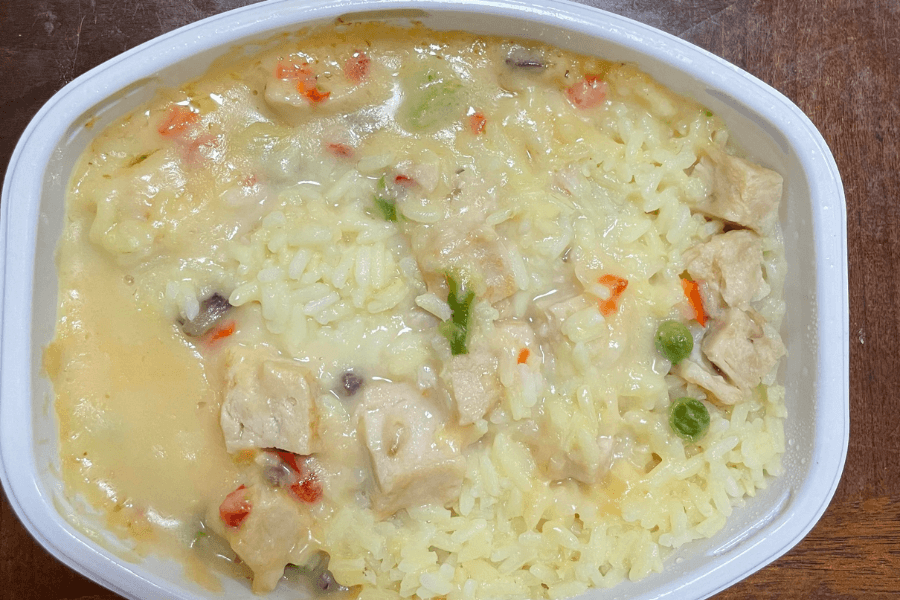
This regal-sounding dish consisted of chicken, peppers, and mushrooms smothered in a creamy sauce. It has a fancy name, yes. But half the time, it came from a can, so let’s not pretend.
Served over toast, rice, or noodles, it gave people the illusion of class. In reality, it was just wet chicken with an ego problem. Still, it filled stomachs.
Back then, people loved anything creamy and mysterious, so this was a winner. Today, it’s basically a sad Tinder date in food form—dressed up but deeply confusing inside.
Tuna Noodle Casserole: The Dinner That Refused to Die
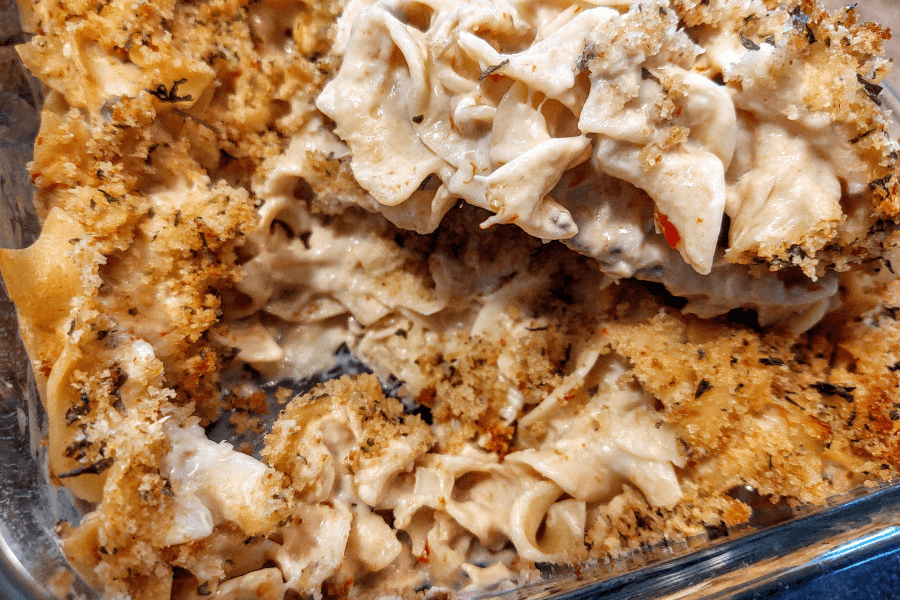
Tuna noodle casserole was comfort food with commitment issues. A mix of noodles, canned tuna, peas, and cream-of-mushroom soup, it always looked like it had lost a bet.
It was topped with crushed chips for “texture,” aka salty chaos. People swore it was delicious, but also—were they okay? This dish smelled like childhood and abandonment.
Cheap, filling, and endlessly confusing, it appeared weekly in homes across America. You didn’t have to like it. You just had to accept it as your carbohydrate overlord.
Beef Stroganoff: Russia’s Least Suspicious Contribution
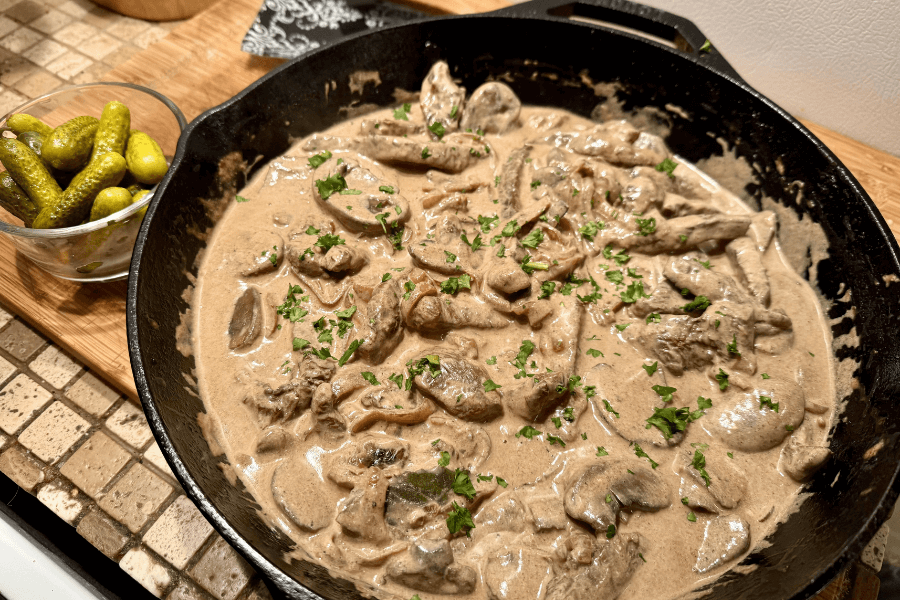
Beef Stroganoff showed up dressed like it was on a spy mission—slippery beef strips lurking in creamy sauce, pretending to be fancy while faintly smelling of confusion.
It was foreign enough to impress guests but simple enough for Betty to cook in pearls. All you needed were noodles, beef, sour cream, and zero spice tolerance.
Despite its blandness, it dominated dinner parties. It was sophisticated… for a decade that also served ham in gelatin. Expectations were low, and Stroganoff cleared that bar beautifully.
Deviled Eggs: Satan’s Favorite Snack
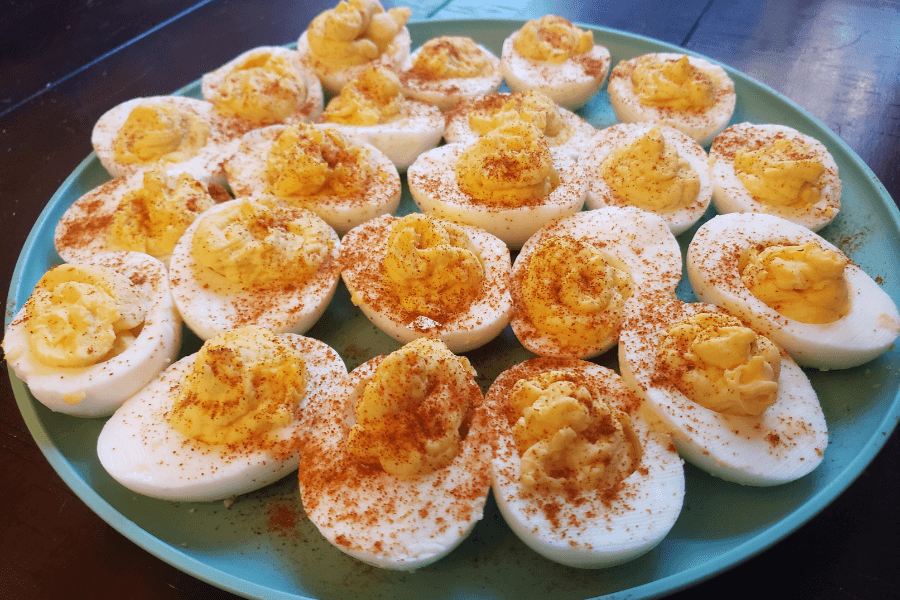
Deviled eggs were little orbs of chaos. Hard-boiled, halved, and stuffed with a mayo mustard mix, they sat proudly on every party tray like edible grenades of gas.
They looked harmless but packed punchy flavor—and the potential for gastrointestinal betrayal. You never just ate one. You ate six and regretted it during small talk with Carol.
Garnished with paprika like it actually did something, these eggs defined 1960s finger food. Elegant? Maybe. Farty? Absolutely. Loved? Unfortunately, yes—these things had more fans than Elvis.
Jell-O Salad: The Dessert That Forgot It Was a Dessert
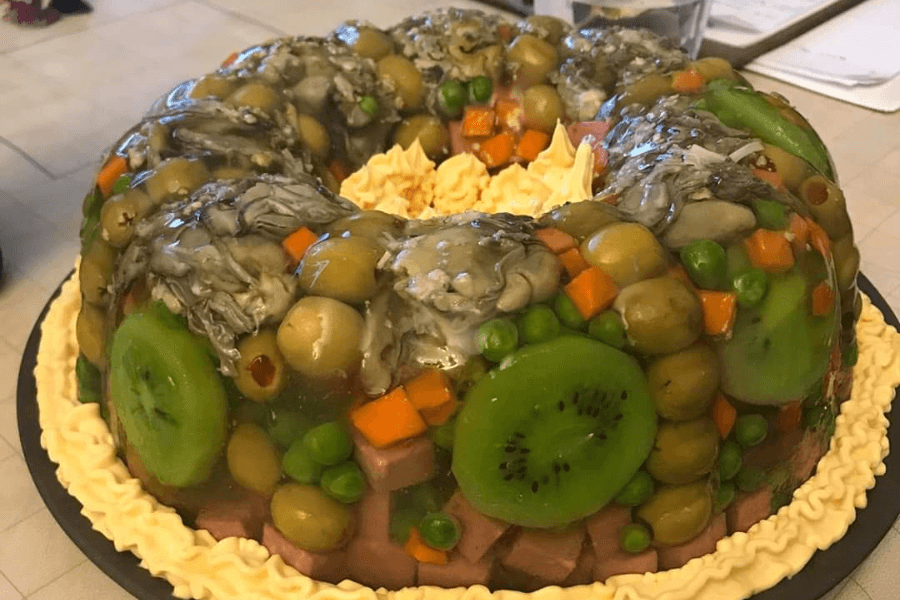
Nothing screams culinary chaos like a “salad” made entirely of Jell-O, pineapple, and carrots. Why? Because the 1960s trusted gelatin more than science. Nothing was off-limits to the mold.
These salads jiggled ominously on every table, held hostage by Tupperware and optimism. Sometimes they had marshmallows. Sometimes olives. Sometimes despair. Nobody knew what was inside until it bit back.
It was edible art—if the artist was deeply confused and possibly blindfolded. You never forget your first Jell-O salad. Mostly because it never stops haunting your dreams.
Meatloaf: America’s Brick of Love
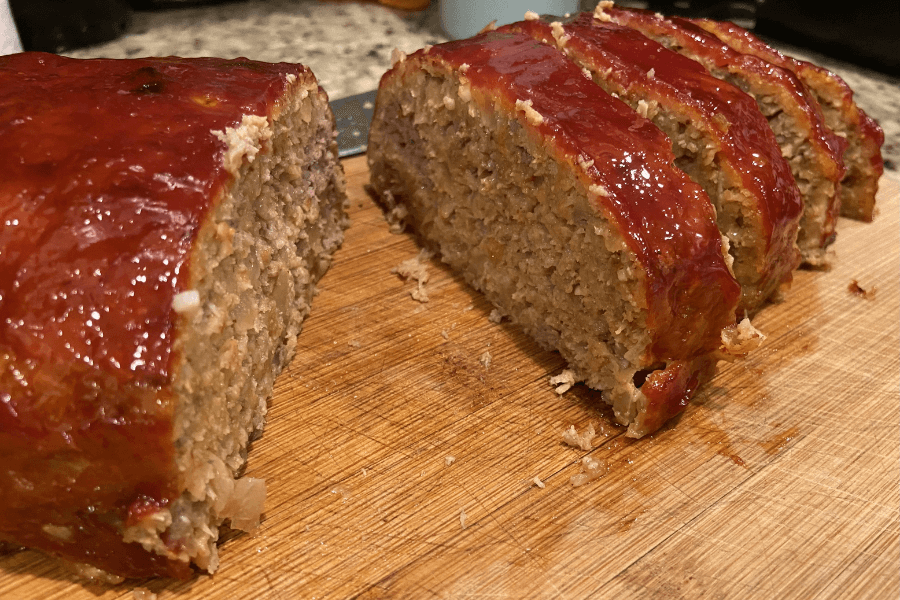
Meatloaf was dinner’s dependable brick—dense, meaty, and absolutely soaked in ketchup. You could build a house with it. Probably already did if you lived in suburban 1965.
It was ground beef mixed with breadcrumbs, onions, and maybe tears. The flavor varied wildly depending on how aggressively your mom argued with your dad that night.
Despite looking like it was shaped with a shoe, the meatloaf stuck around. Why? Because it was easy, filling, and made decent sandwiches. Ugly food has staying power.
Fondue: Hot Cheese, Hotter Parties
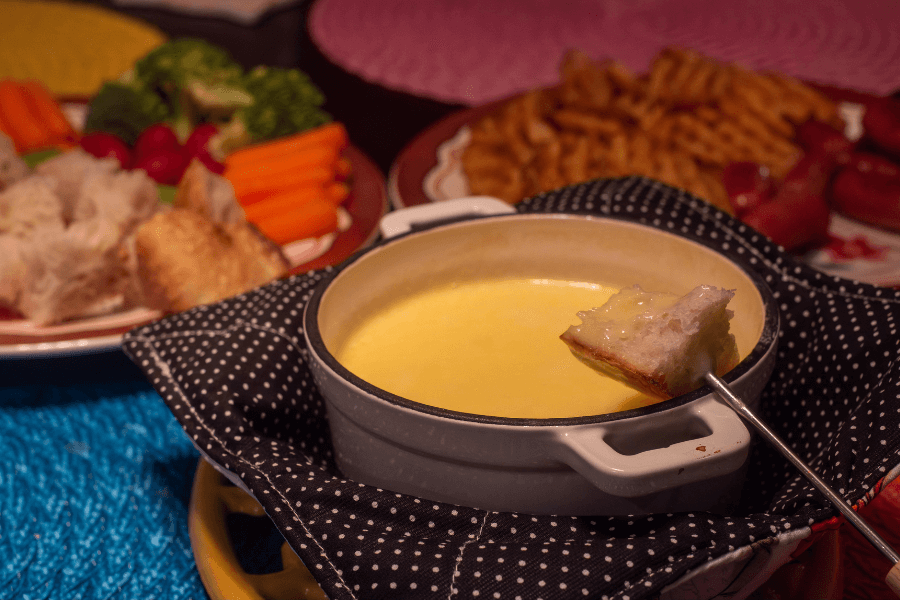
Fondue was the ’60s version of TikTok—everybody tried it, and nobody knew why. Melted cheese in a pot. Bread cubes. Friends pretending not to double dip. A fever dream.
It wasn’t just cheese, either. There was chocolate fondue too, for people who wanted to make dessert feel like sticky team-building. Marshmallows took the plunge. So did strawberries.
Fondue sets were required as wedding gifts. People lived for the theatrics. Want sophistication? Just dunk carbs into molten cheese while sipping wine and side-eyeing your coworker’s weird boyfriend.
Ambrosia Salad: A Fruity Fever Dream
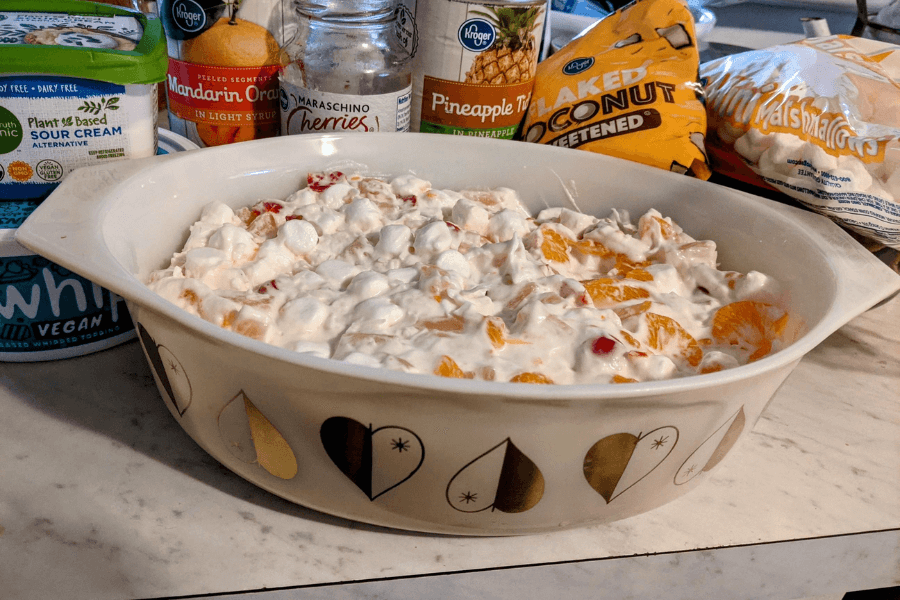
Ambrosia salad sounds divine, right? Wrong. It was a sticky-sweet mess of canned fruit, marshmallows, and Cool Whip pretending to be “heavenly.” Honestly, it tasted like a confused dessert soup.
People loved serving it at holidays, especially when no one asked for it. Grapes, coconut flakes, suspicious mandarin oranges—it was fruit salad by way of emotional instability.
Ambrosia means “food of the gods,” but the gods definitely regifted this one. It looked like clown tears and melted packing peanuts. Yet somehow, people couldn’t stop eating it.
Salisbury Steak: TV Dinner Royalty
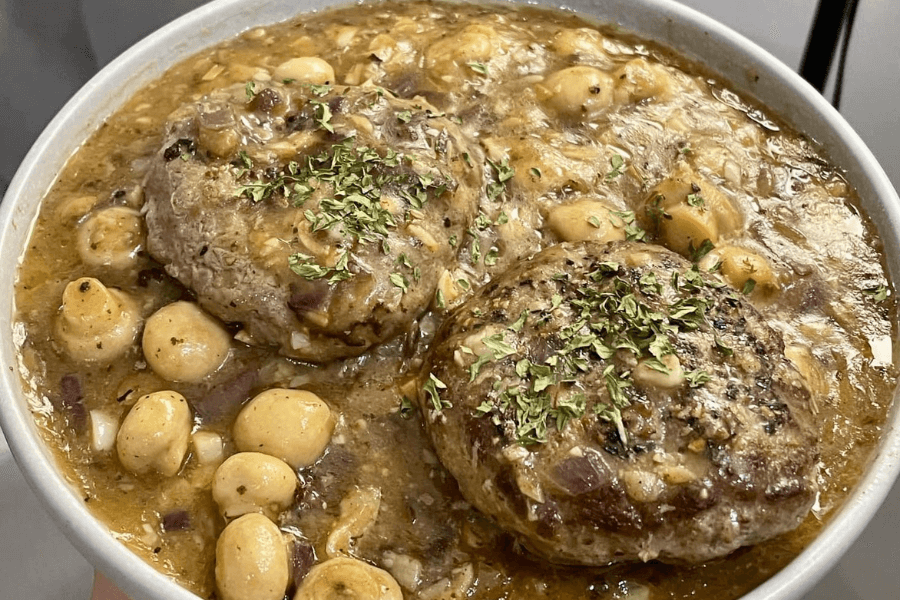
Salisbury steak was a meat patty dressed up as a steak, slathered in gravy, and served with soggy peas. It was ground beef playing charades with your expectations.
Popularized by TV dinners, this meal was for people who wanted fast food without leaving their linoleum palace. All you needed was an oven and the will to chew.
Despite its suspicious texture, Salisbury steak stayed strong. It was dependable, like a meat-scented security blanket. Just don’t ask where the meat came from—or what it really was.
Green Bean Casserole: The Holiday Hostage Dish
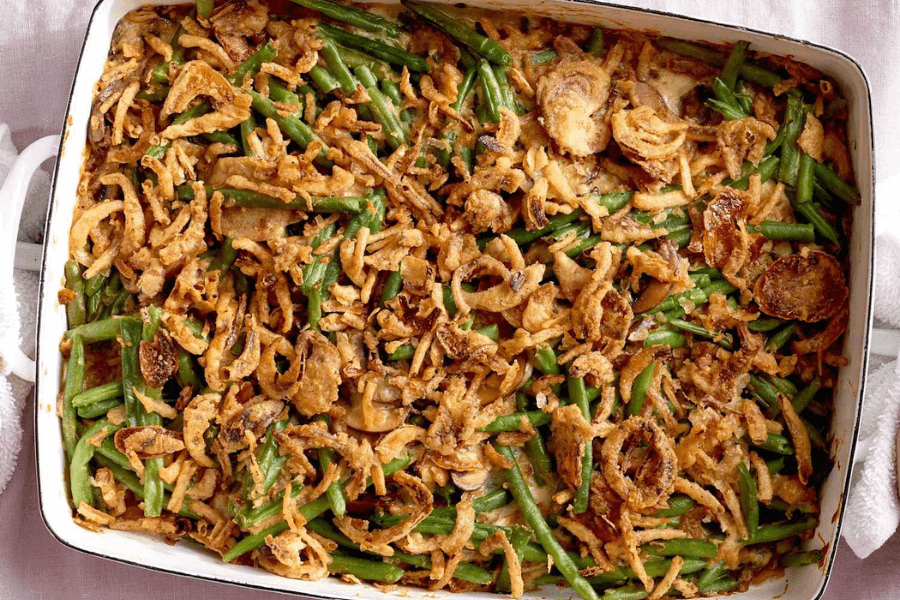
Green bean casserole was the veggie dish nobody trusted, yet it showed up every Thanksgiving. Green beans, mushroom soup, and fried onions—like a salad that lost its mind.
It had texture, sure—mushy underneath, crunchy on top, like a metaphor for family gatherings. Nobody asked for it, but it arrived anyway, judging you from the buffet.
Creamy, salty, and bizarrely addictive, this was the peak of a “weird dish your aunt swears by.” Everyone pretended to like it. Until you got older and realized you actually did. Whoops.
Spam: The Meat That Won’t Quit

Spam. Just… Spam. A mysterious pink brick of pressed pork that lived in every pantry like a weird uncle who won’t leave. Salty, squishy, and terrifyingly shelf-stable.
You could fry it, bake it, slice it, or launch it into space. Spam didn’t care. It was indestructible. Probably still lurking in someone’s bomb shelter right now.
Despite looking like something found in a dissection lab, Spam had fans. Real ones. It was the Swiss Army knife of meat: horrifying, but undeniably useful in a pinch.
Pineapple Upside-Down Cake: Dessert’s Greatest Drama Queen

Pineapple upside-down cake was the diva of 1960s desserts. Sugary, gooey, and visually loud—like someone turned a fruit salad into a Vegas showgirl. And we loved it for that.
Made in a single pan and flipped like a gymnastics routine, it had caramelized pineapples, bright cherries, and sponge cake that often tasted like regret. But a sweet regret.
This dessert was peak hospitality. You brought it to dinner parties to say, “I tried, ” and show off your baking skills, even if the cake was stuck in the pan.
Stuffed Celery: The Saddest Appetizer Alive
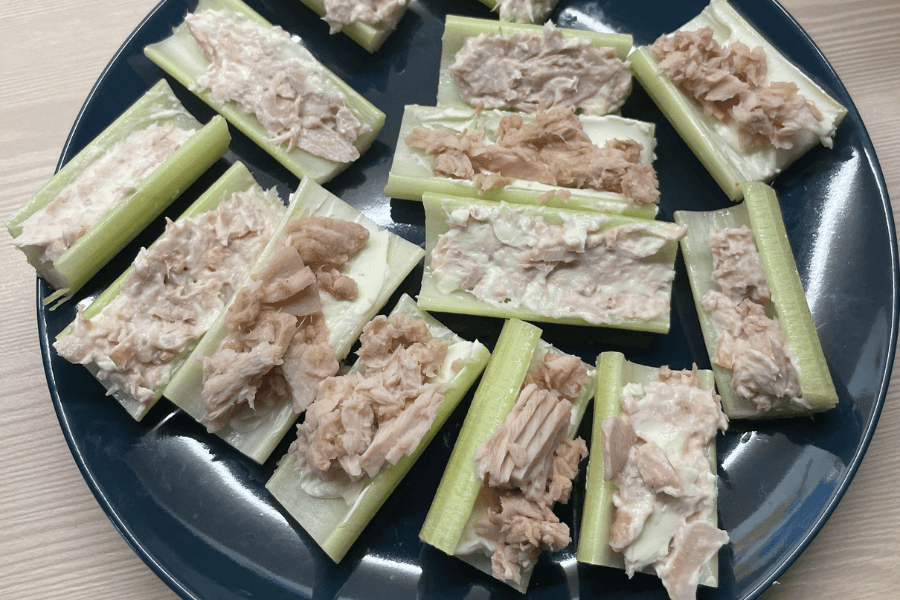
Stuffed celery tried so hard to be exciting. Crunchy stalks filled with cream cheese or peanut butter, maybe paprika on top. It was basically a vegetable Hail Mary.
People served it proudly at cocktail parties, saying, “Look! I did something!” But really, it was crunchy sadness wearing a dairy coat—a snack that screamed effort but whispered disappointment.
No one craved it. Ever. But it kept appearing because it was “light” and “refreshing”—two words that never saved any dish from being completely forgettable.
Baked Alaska: Fire, Ice, and Why Though?

Baked Alaska was dessert’s attempt at performance art—cake and ice cream wrapped in meringue and then torched. Nothing says “I hate logic” like flaming frozen food.
It required skill, patience, and a complete disregard for temperature laws. You also needed a torch, a prayer, and possibly a fire extinguisher. It was great for impressing guests—or losing eyebrows.
Despite the danger, it was loved. Because if your dessert didn’t involve fire and drama, were you even trying? The 1960s demanded spectacle, even from dessert.
Liver Pâté: The Fancy Paste Nobody Wanted
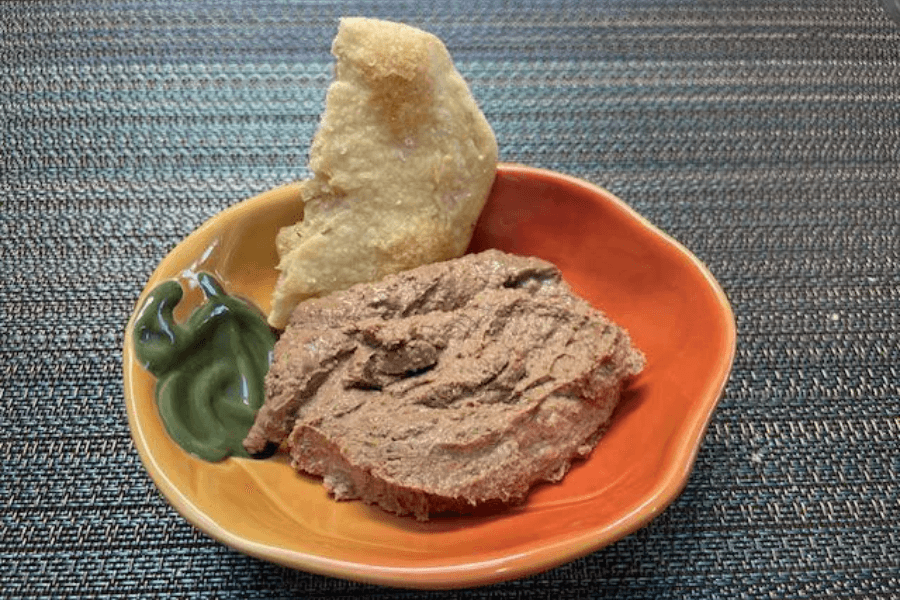
Liver pâté was meant to be elegant. Spreadable meat? Très chic. Except it looked like cat food and tasted like sadness in a blender, garnished with false sophistication.
It came in molds, crusts, or straight from a tin. Texture: gritty velvet. Flavor: iron-rich childhood trauma. Served with crackers that screamed, “We tried our best.”
People at parties pretended to love it. Inside, they were screaming. Outside, they nodded knowingly while discreetly hiding their napkins under the table—a true social survival skill.
Cabbage Rolls: Meat Burritos for Cold War Dinners
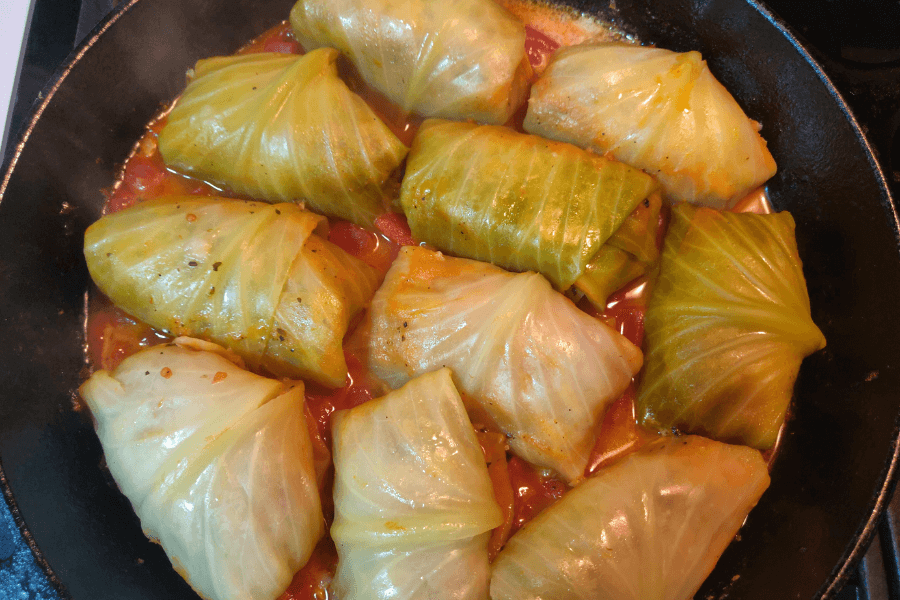
Cabbage rolls were the 1960s version of an international dish, though they felt more like punishment than cuisine. Boiled cabbage wrapped around beef and rice? Mmm, smells like compromise.
They were dense, slightly soggy, and required too many napkins. But families still made them, proudly serving Eastern European vibes without seasoning or enthusiasm.
Often drowned in tomato sauce to mask the flavor of boiled leaf, these rolls were sticky little meat grenades. Comfort food, if your comfort was “slightly damp and vaguely Eastern Bloc.”
Chicken Tetrazzini: The Noodle Nest of Mystery
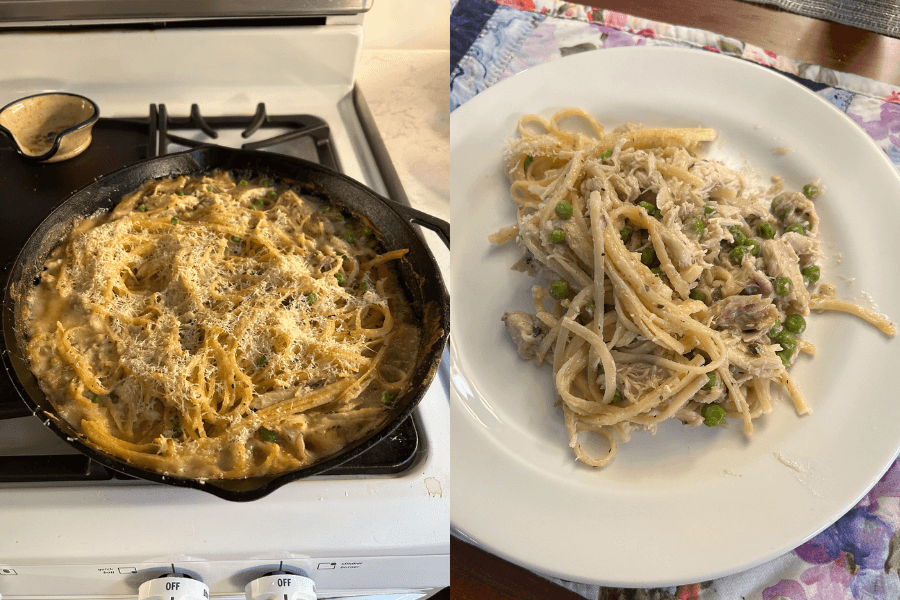
This creamy chicken pasta bake sounded fancier than it was, mostly because of the “Tetrazzini” part. No one knew what that meant, but it was smothered in sauce, so, sure.
Tetrazzini was what happened when you had leftover chicken, a fear of flavor, and a love of casseroles. Plus, bonus mushrooms. Always mushrooms. Forever mushrooms.
You could feed a small village with one pan, which was the point. It wasn’t pretty, but it stretched a chicken breast like it owed you money.
Liver and Onions: A Sad Dinner and a Cry for Help
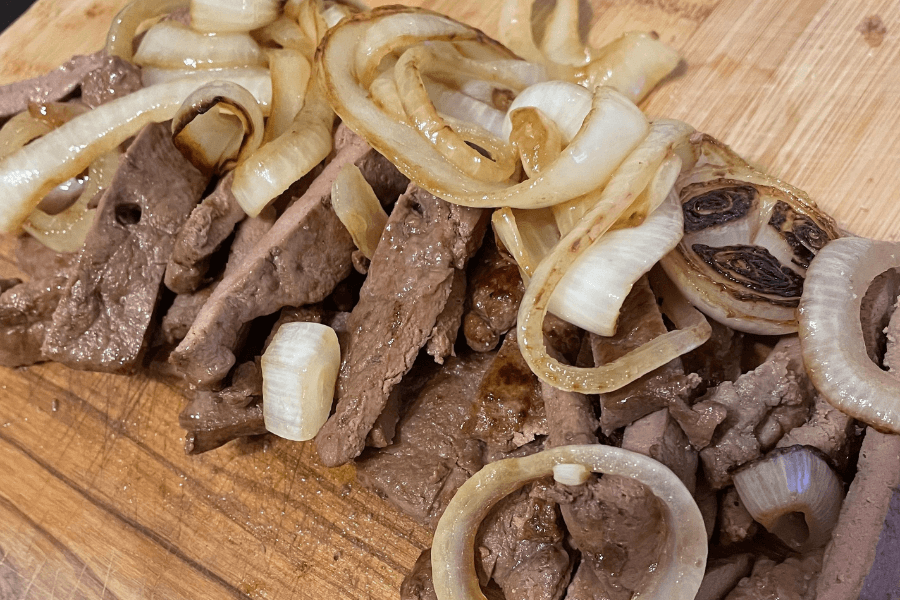
Liver and onions were the culinary equivalent of a parent yelling, “Because I said so!” Iron-rich, chewy, and aggressively unloved, it was the meal nobody asked for—but still got.
The liver was earthy (read: tasted like pennies), while the onions were caramelized in a desperate attempt to distract your taste buds. However, it didn’t work.
People served this for “health.” But emotional damage was imminent. You could smell it cooking three blocks away. That smell meant someone was about to cry at dinner.
Waldorf Salad: Crunchy Chaos in a Bowl
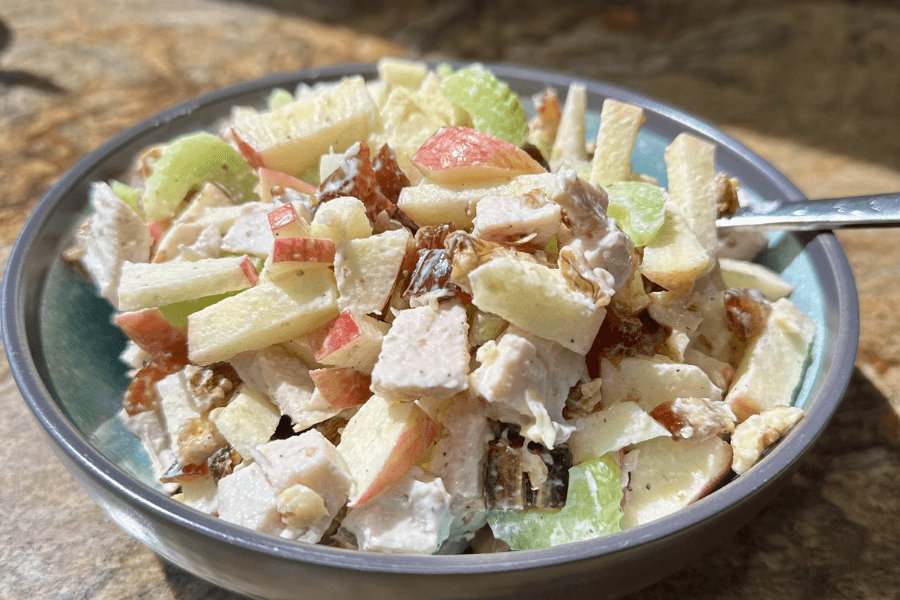
Waldorf salad combined apples, grapes, celery, and walnuts in mayonnaise, which sounds like a fruit salad and a vegetable tray that got drunk and made terrible decisions together.
It was sweet, savory, crunchy, and confusing—like snacking at a cocktail party inside a haunted produce aisle. Fancy in theory. Texturally aggressive in reality.
Invented way before the ’60s but still popular then, it was weirdly chic. You ate it politely, wondering if your taste buds had finally broken or just surrendered completely.
Egg Salad: Lunch’s Slippery Friend
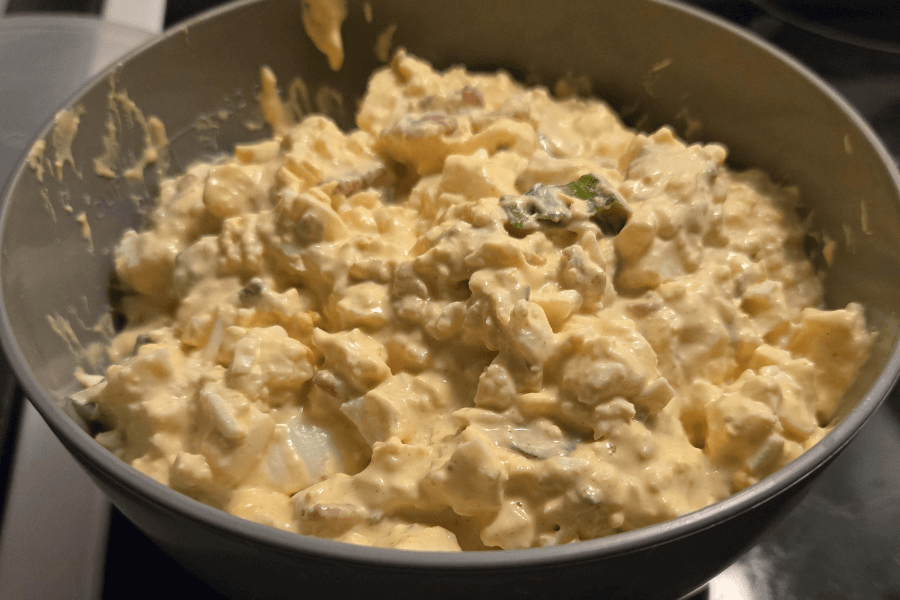
Egg salad was a cold, mushy sandwich filling that nobody liked to admit they enjoyed. Chopped boiled eggs, mayo, maybe some mustard—spreadable sulfur with a side of regret.
It was great if you loved peeling eggs and disappointing your coworkers. One whiff and the entire lunchroom turned on you like a pack of angry meerkats.
Still, it was cheap, protein-packed, and disturbingly easy to make. Just don’t bring it to a potluck unless you want people to stop talking to you.
Macaroni Salad: The Cold Pasta That Forgot It Was Pasta
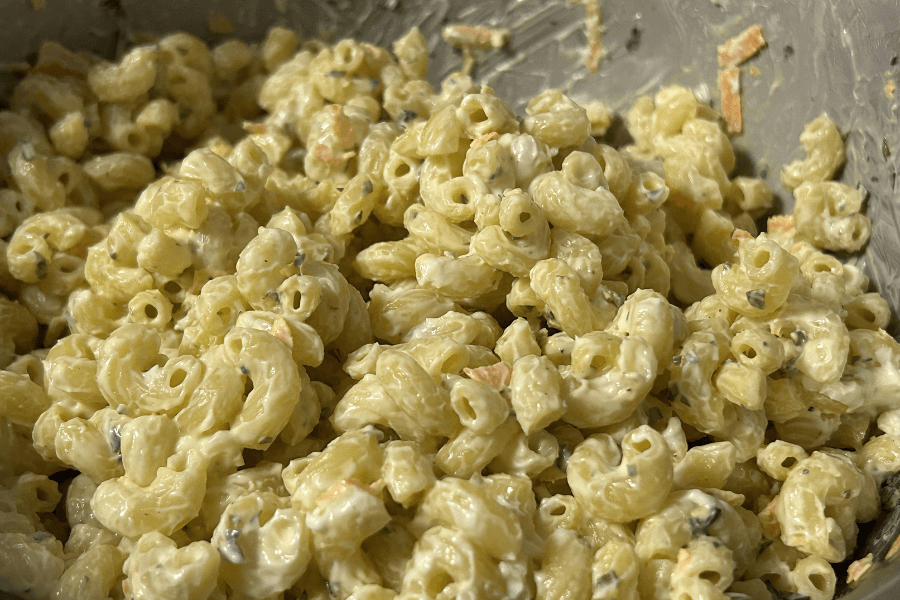
Macaroni salad took pasta—a warm, comforting carb—and made it cold, mayonnaise-laden, and aggressively bland. A side dish that tasted like broken dreams and office picnics.
It was elbow macaroni, diced celery, and maybe some pickles if your aunt was feeling wild. Often served from a bowl suspiciously warm from sitting out too long.
Popular at barbecues because no one wants to be the person who doesn’t bring something. Congrats, you brought filler. Tastes like a fridge and mediocrity. Mission accomplished.
Cocktail Weenies: Tiny Tubes of Party Magic
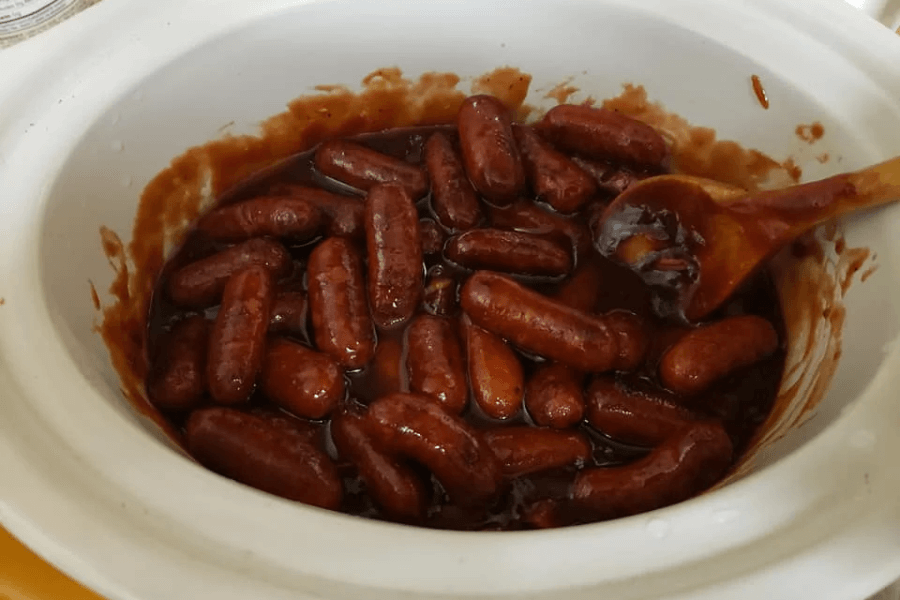
These little sausages soaked in a mysterious BBQ-grape jelly sauce were a staple of 1960s parties. Sweet, savory, and suspiciously addictive, they were the MVPs of mid-century snacking.
Served with toothpicks from a Crock-Pot bubbling like a witch’s brew, cocktail weenies made guests feel fancy—while eating what was basically a hot dog in disguise.
Sure, they looked like miniature crime scenes, but you couldn’t eat just one. You’d start politely and hoard them like you were stockpiling for the apocalypse.
Creamed Chipped Beef on Toast: AKA “SOS”
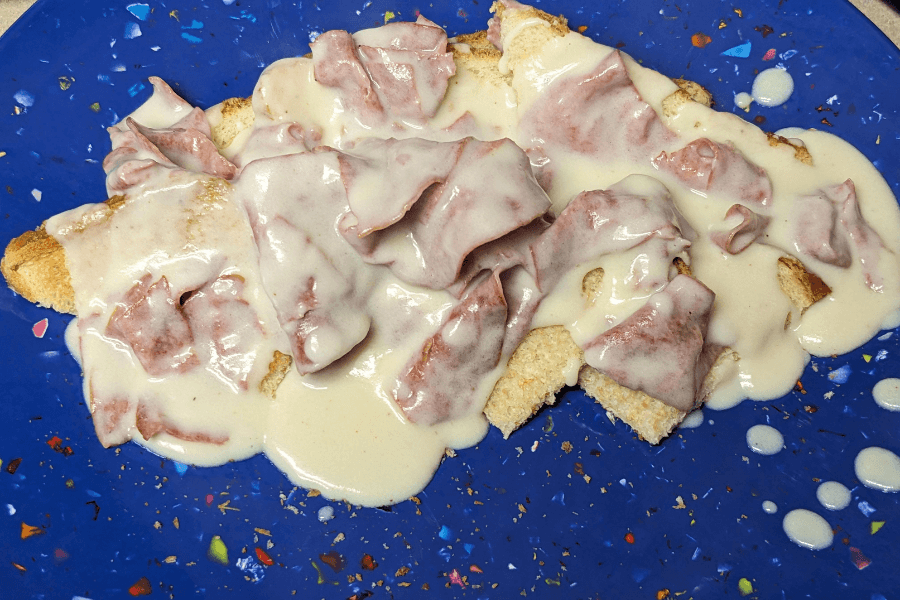
Known in the military as “Sh*t on a Shingle,” this creamy beef-on-toast dish was salt, dairy, and sadness piled high. Perfect for feeding kids or scaring houseguests.
It was dried beef, thick white gravy, and toasted bread—a meal built entirely from pantry desperation and post-war practicality. It looked like a printer jammed gravy.
Not attractive, barely appetizing, but weirdly nostalgic. Some folks loved it. Most tolerated it. Everyone remembered it, especially after scrubbing the gravy off the ceiling.
Chicken Divan: The Broccoli Trap
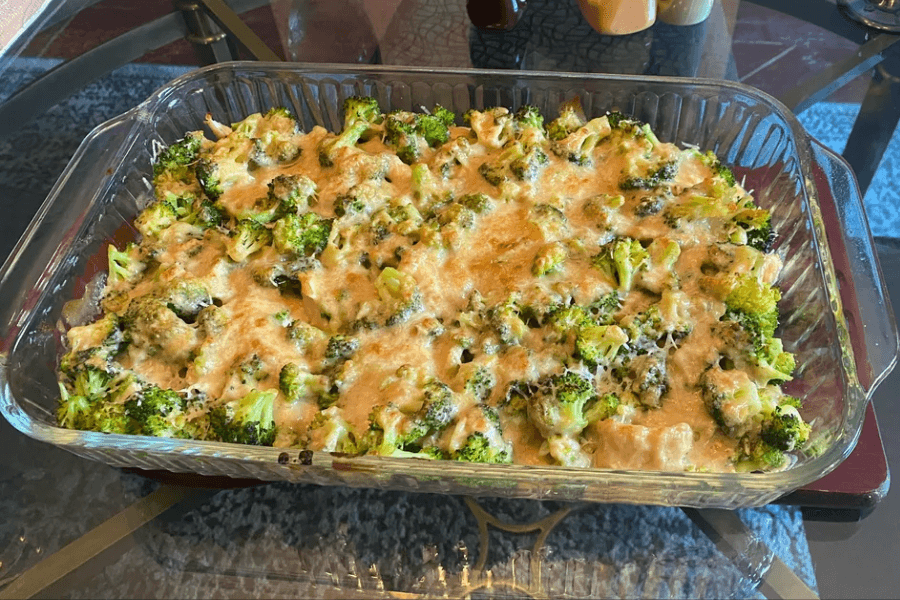
Chicken Divan was how moms tricked kids into eating broccoli by drowning it in cheese sauce and smugness. Baked into oblivion, it dared you to call it a casserole.
It combined chicken, broccoli, and enough cheddar to fuel a Wisconsin rave. Fancy name, but don’t be fooled—it was just another excuse for canned soup.
The broccoli was always overcooked, the cheese suspiciously neon, and yet… somehow, people kept coming back. It was like Stockholm syndrome, but with poultry and vegetables.
Popcorn Balls: Dental Insurance in Dessert Form
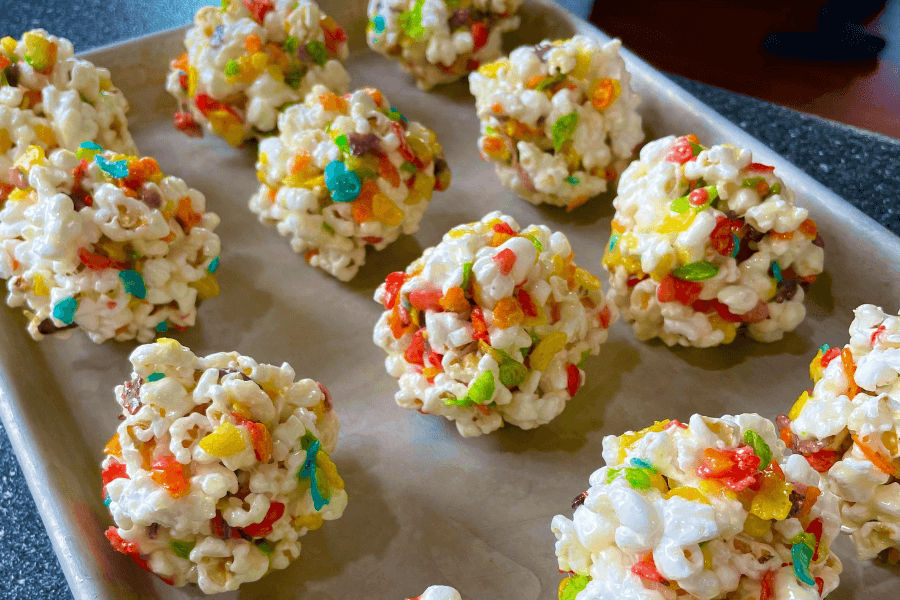
Popcorn balls were sugary spheres of crunch that doubled as weapons and dessert. They were sticky, chewy, and capable of yanking out a molar if you blinked incorrectly.
Often homemade and wrapped in wax paper, they lived in Halloween treat bags like sugary landmines. Festive? Yes. Safe? Absolutely not. Delicious? Surprisingly, kinda.
A mix of popcorn, corn syrup, and chaos, they were the ultimate retro treat. Bite carefully. Chew slowly. Call your dentist immediately. Ah, the sweet sting of nostalgia.
Corned Beef Hash: Breakfast or Cry for Help?
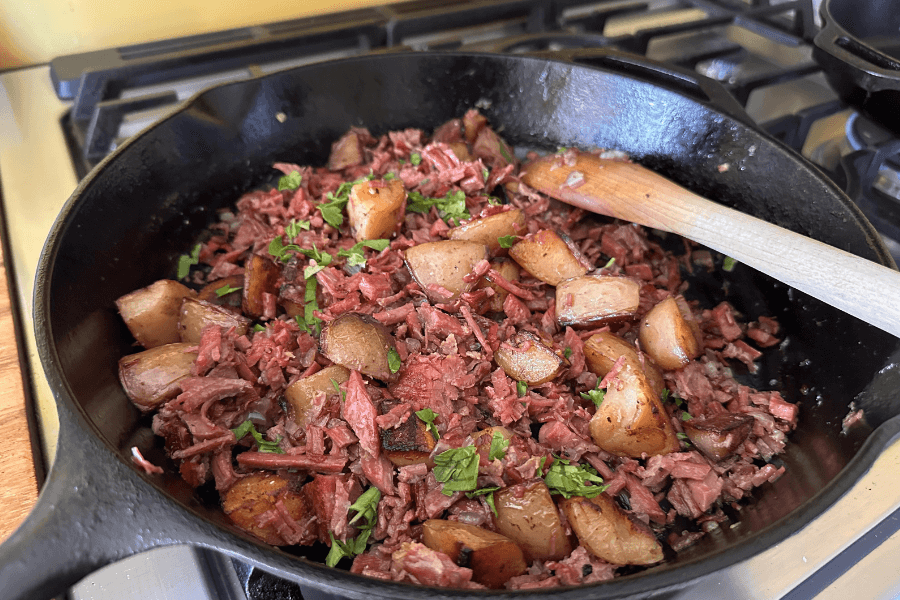
Corned beef hash was what you ate when the fridge was empty except for canned meat and potatoes. It was greasy, salty, and somehow both crunchy and soggy.
A breakfast staple, especially if you liked your mornings filled with regret and burps that lasted all day. It looked like a car crash in a frying pan.
Still, it slapped. You’d fork it up with eggs on the side, feeling like a champion—or someone who’d just given up and accepted their fate as a salt sponge.
Tomato Aspic: Gelatin’s Final Insult
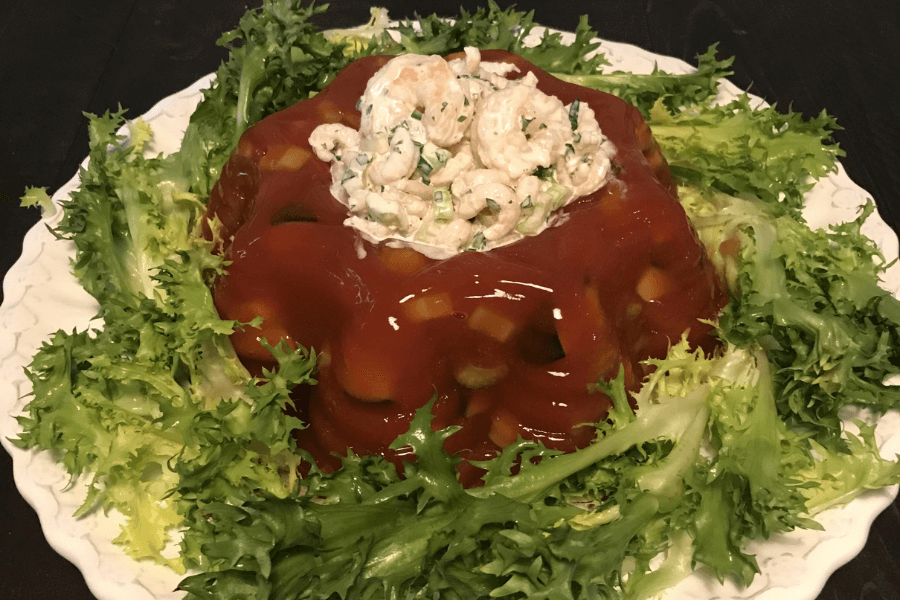
Tomato aspic was like Jell-O having a midlife crisis and starting to identify as soup. Cold tomato gelatin? With celery bits? That’s not a dish. That’s a threat.
You’d slice into it. It wobbled ominously on every church buffet table. People brought it proudly. Everyone avoided it quietly.
Nobody actually liked tomato aspic. It was just there—like wallpaper or that weird cousin at family reunions. Jell-O, please stop. Just because you can doesn’t mean you should!
Cheese Balls: The Party Mascot No One Trusted
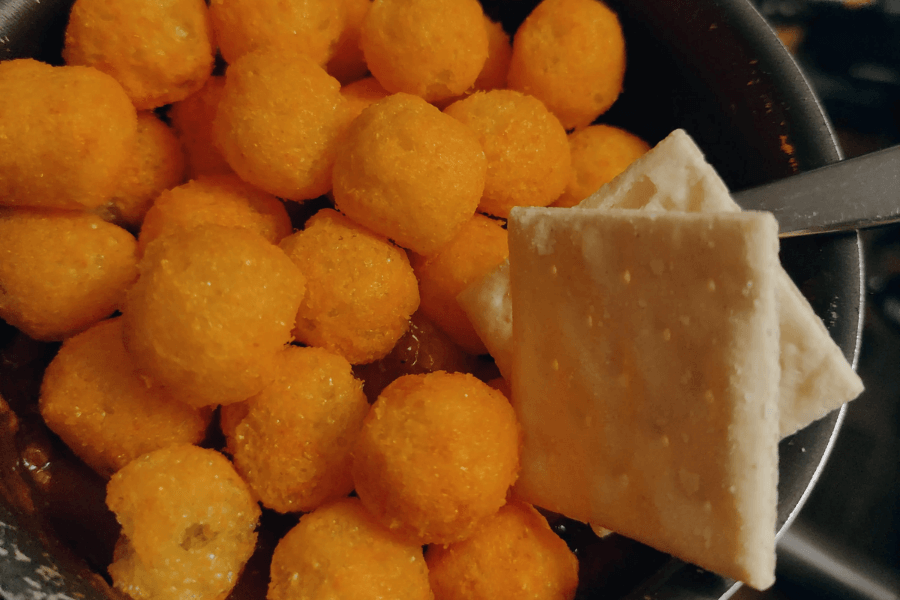
Cheese balls were party food mascots—spheres of dairy rolled in nuts and confusion. Bright orange, mildly terrifying, and somehow always slightly sweaty, they demanded attention with zero shame.
You’d smear them on crackers, pretending it was gourmet. But deep down, you knew this cheese had never seen a cow. Probably formed in a lab.
Cheese balls were edible decorations. No one ate the whole thing, yet it vanished. Mystery. Magic. Processed dairy with the emotional energy of a glitter bomb.
Vienna Sausages: The Hot Dogs That Gave Up
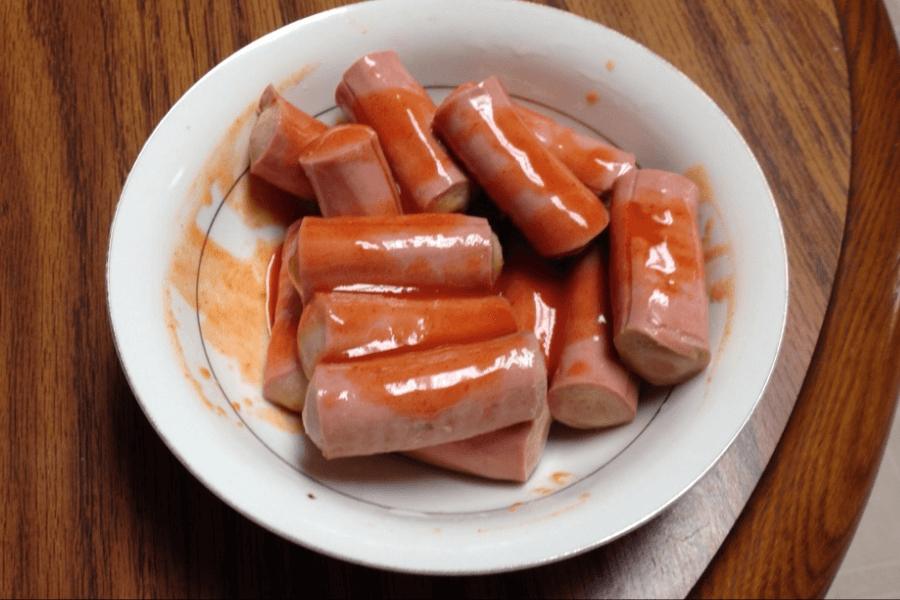
These tiny, canned sausages looked like something you’d feed a sick dog or use as bait. Soft, wet, and questionably pink, they made Spam look high-end.
They came in a tin filled with mystery juice. No one knew what the liquid was. Brine? Oil? Sadness? We just drained it and hoped for the best.
You could eat them cold or warm—both ways felt wrong. Yet somehow, they lived in pantries everywhere, like edible gremlins ready to ruin lunchboxes and lives.
Fish Loaf: The Ocean’s Worst Revenge
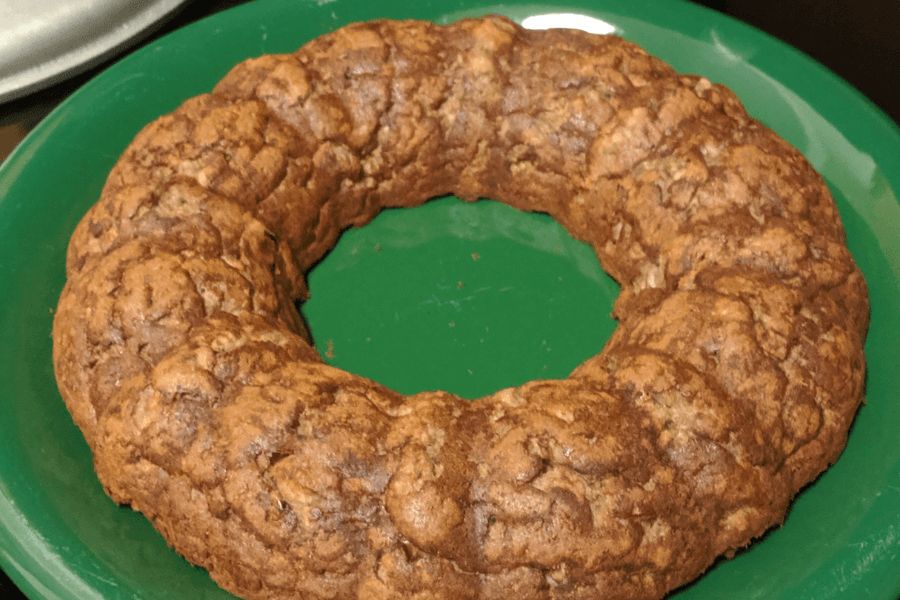
Fish loaf is what happens when someone looks at meat loaf and thinks, “This needs more scales and existential dread.” It is a soft, baked brick of mystery fish and questionable seasoning.
It was pale and flaky and smelled like decisions made under duress. It was often served with lemon to distract from the taste of maritime despair.
Even with tartar sauce and a prayer, fish loaf rarely recovers from being fish loaf. It was the edible equivalent of a work meeting that should’ve been an email.
Orange Glazed Ham: Dessert Meets Meat, Confuses Everyone
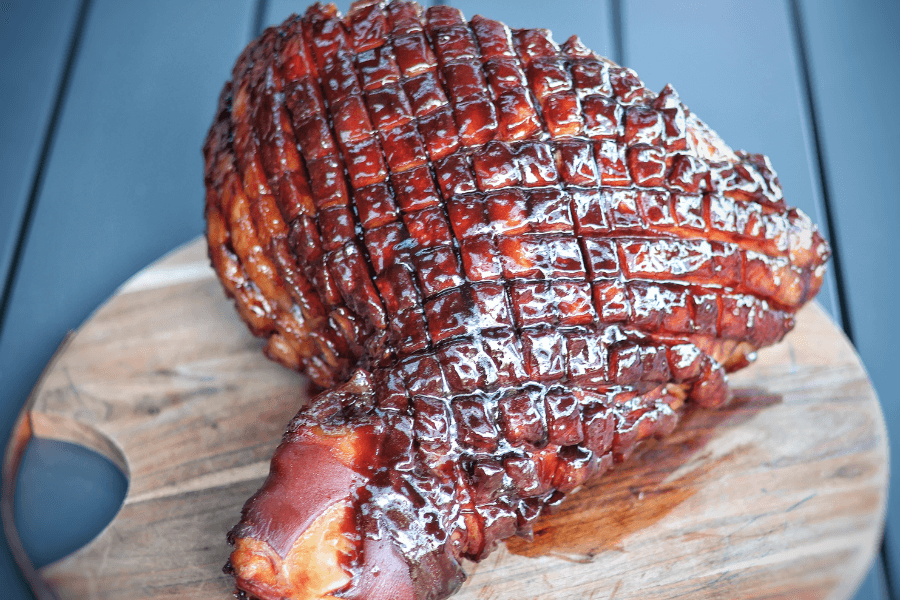
Orange-glazed ham was the 1960s’ idea of elevating dinner—sugar and citrus slathered all over pig. It was sticky, shiny, and somehow managed to taste like fruit punch and pork.
Pineapples were optional but strongly encouraged, and cherries, too. Nothing says “sophistication” like stabbing meat with a toothpick fruit kabob. Martha Stewart cried real tears over this.
It looked beautiful. But bite into it, and your brain short-circuits. Sweet? Savory? Dessert? Entrée? Nobody knew. They just chewed and smiled through the existential crisis.
Hot Dog Casserole: A Crime in Multiple Layers
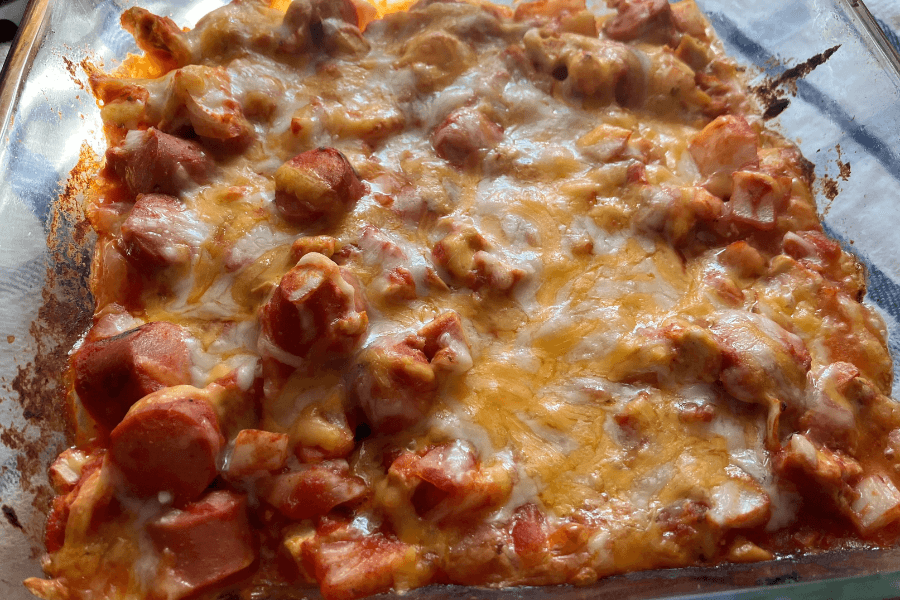
Hot dog casserole combined chopped wieners, noodles, canned soup, and cheese in a bubbling mass of sodium and regret. It was the Frankenstein’s monster of mid-century childhood dinners.
Parents made it because it was cheap and easy. Kids ate it because rebellion wasn’t an option. Nobody was proud, but everyone was full—and slightly bloated.
It was crunchy, creamy, and deeply confusing. It didn’t hate you, but it wasn’t trying to be liked, either. Just hot dogs living their worst lasagna fantasy.
Oysters Rockefeller: Fancy With a Side of Fishy
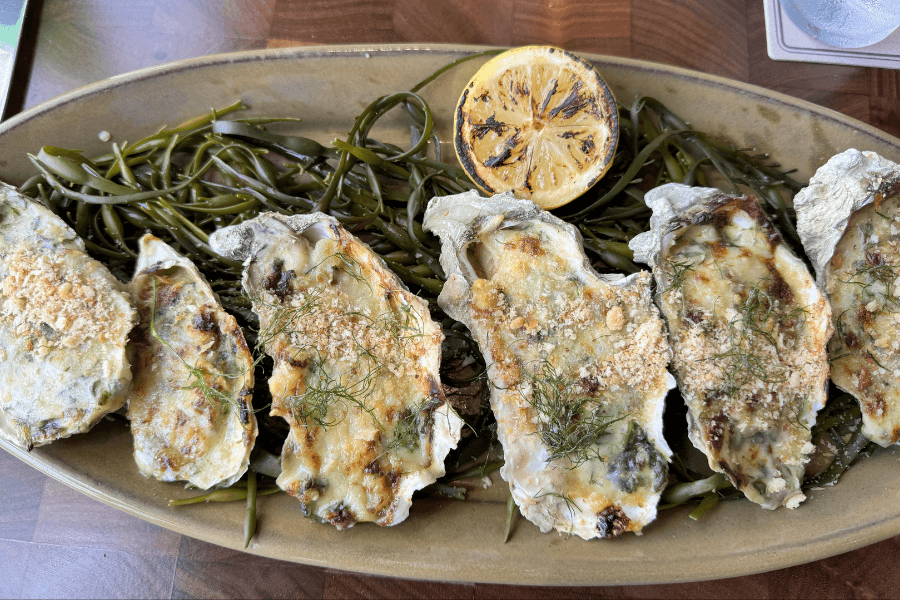
Oysters Rockefeller were for the rich aunt who wore too much perfume. Baked oysters, spinach, butter, and breadcrumbs—elegant, yes. But also like licking a fish tank in a tuxedo.
They were green, creamy, and often served at “adult” parties, where kids weren’t allowed and no one admitted they hated them. So chic. So slimy.
You’d pretend to like it just to seem sophisticated. But deep inside… well, you just want to spit it out. The problem is, you know it’s not good to do, so… you kept chewing politely!
Shrimp Cocktail: Elegance on Ice
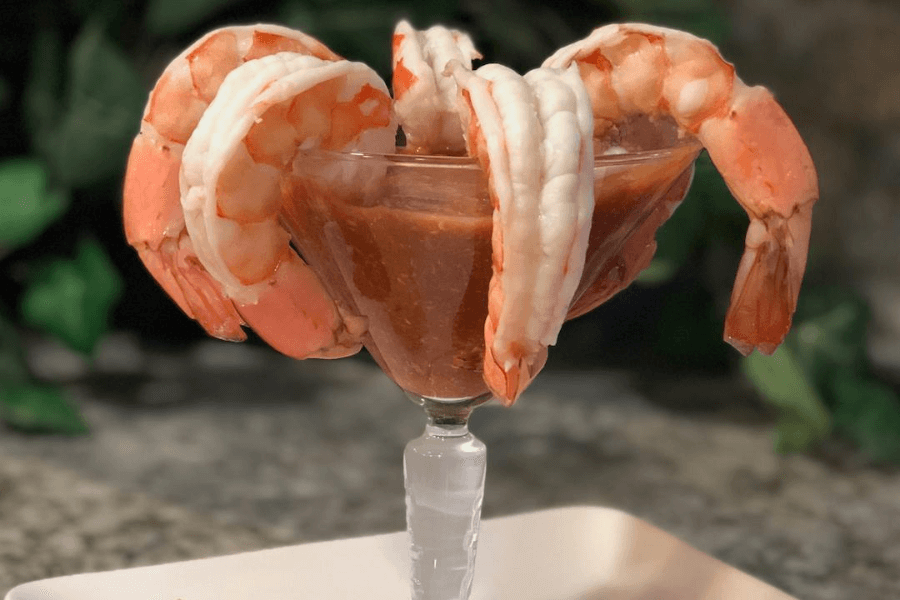
Shrimp cocktail looked like it was ready for prom—fancy glass, cocktail sauce, shrimp curled like divas. Cold seafood and ketchup-adjacent dip? This was high-class in the Nixon era.
Served at every wedding, anniversary, and key party, shrimp cocktail whispered luxury—while your brain screamed, “Why is this room-temperature seafood pretending it’s fancy?”
But people devoured it. It was the only thing in the ’60s that involved shellfish, sauce, and dignity, except when the shrimp were rubbery. Then it was war.
Prune Whip: Dessert or Digestive Directive?
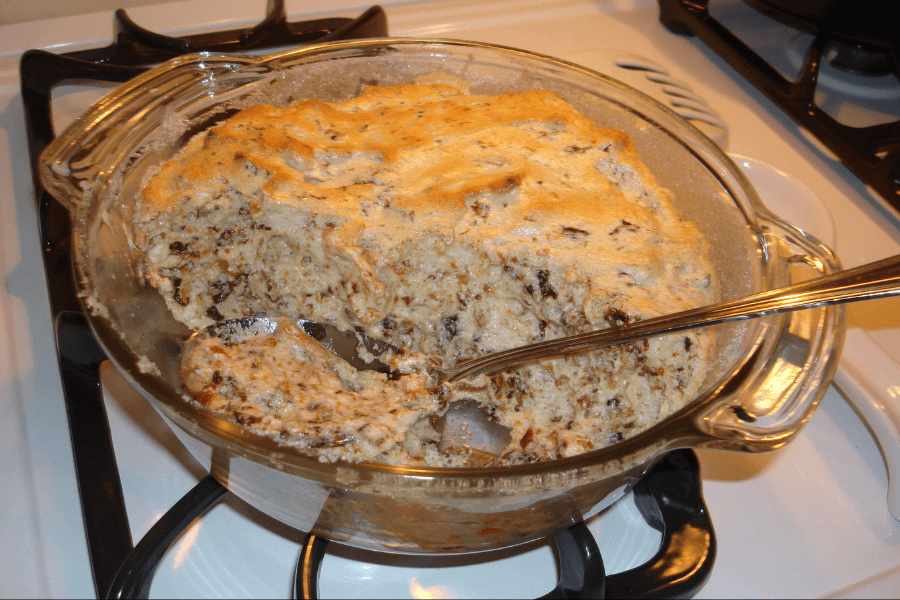
Prune whip was the 1960s’ subtle way of saying, “You’re old now.” It was pureed prunes beaten with egg whites and sugar until fluffy. And vaguely threatening.
Meant to be light and airy, it was actually dense with judgment. A dessert that doubled as fiber therapy. Granny served it with a knowing smile.
You didn’t enjoy prune whip. You survived it. It was the kind of sweet that reminded you of wills, hard candy, and chairs covered in plastic.
Bologna Boats: Because Sails Are Optional

Bologna boats were slices of bologna curled into little meat cups, filled with things like cheese, eggs, or sadness. It was a canoe of questionable ingredients floating through despair.
You’d bake them until the edges crisped like regret. The middle? A molten pool of mystery. It was like eating a hot dog that went to art school.
These weren’t meals. They were edible science experiments. But they made lunch “fun,” according to no one ever unless you were eight and wildly forgiving of everything.
Ham and Banana Hollandaise: Why Did You Do This?
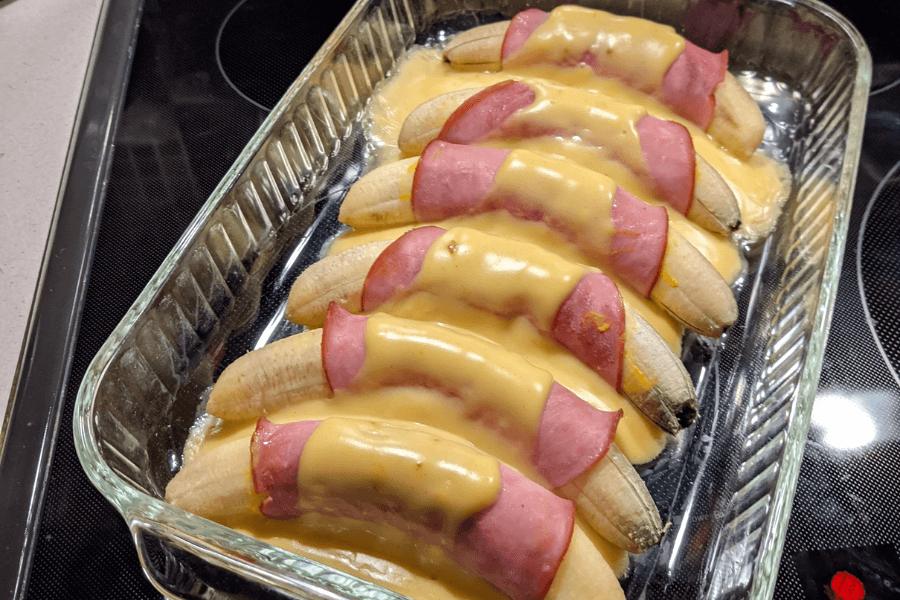
Yes, this happened. Bananas wrapped in ham, slathered in Hollandaise sauce, then baked until your taste buds screamed. It was chaos. It was culinary rebellion. It was pure 1960s energy.
Savory ham, sweet banana, and creamy sauce—three flavors that should never share a plate, much less a bite. This dish was war. Against logic. Against good taste. Against humanity.
It looked like an alien autopsy and tasted like betrayal. Who thought this was appetizing? The same people who thought Jell-O shrimp loaf was festive, probably.
Chicken Livers Wrapped in Bacon: Appetizer or Trap?
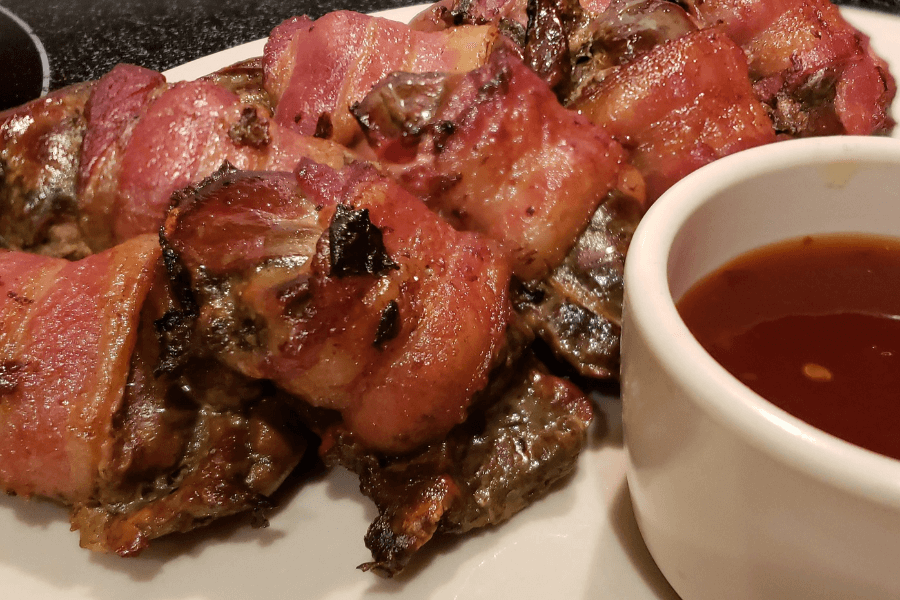
Chicken livers wrapped in bacon—because sometimes the only way to eat something awful is to disguise it in something good. It was salty, meaty, and deeply confusing, like the other dishes here.
These were cocktail party bait. You’d think, “Oh yay, bacon!” Then, bam—liver ambush! You’d chew politely while mentally writing your host out of your will.
Some people swore by them. “Delicacy,” they said. No. They were bacon-coated booby traps. Bite-sized betrayal wrapped in nitrates and regret. Welcome to the ’60s, sweetie.
Celery Victor: Salad’s Most Underwhelming Hero
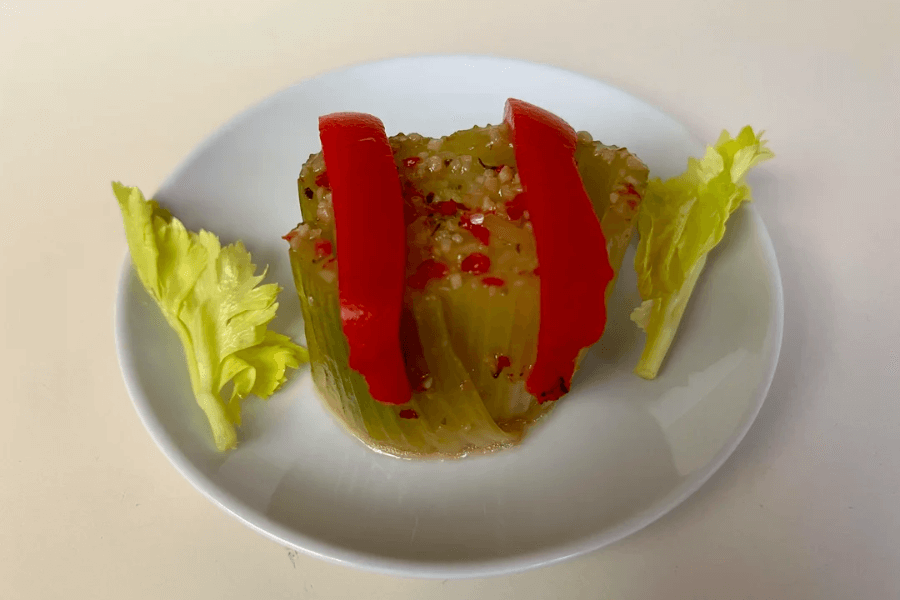
Celery Victor was cooked celery. That’s it. Someone boiled celery, chilled it, and called it a dish. Bold move. Very few vegetables needed less help than celery—and got more.
It was marinated in broth and vinegar, sometimes with pimentos if you were feeling spicy. But mostly, it tasted like… celery. Slightly wet celery. In a bowl.
Imagine making a salad and choosing only celery. You’d have to be either a visionary or incredibly bored. Either way, this dish existed for some reason.
Molded Cottage Cheese Salad: Curdled With Confidence
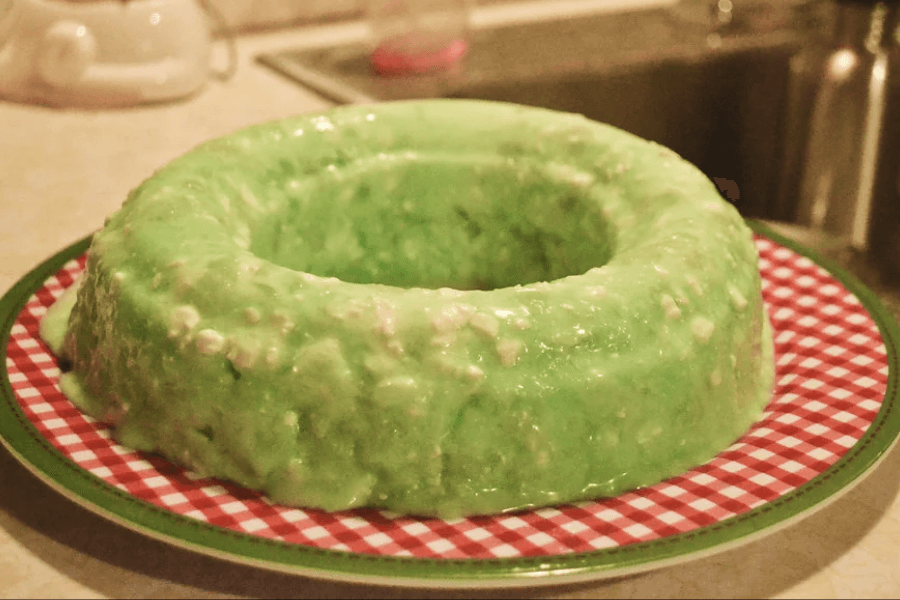
Imagine cottage cheese trapped in lime Jell-O, surrounded by pineapple, shredded carrots, and possibly despair. Molded cottage cheese salad was a textural nightmare and a flavor crime.
It was served proudly in ring molds and Bundt pans, then garnished with lettuce for no reason. Nothing about it was okay, but people loved it.
The curds gave it “body,” and the Jell-O gave it anxiety. This was the salad equivalent of a nervous breakdown wrapped in green wobble. Nobody was emotionally prepared.
Pimento Loaf: Meat Mosaic of Regret
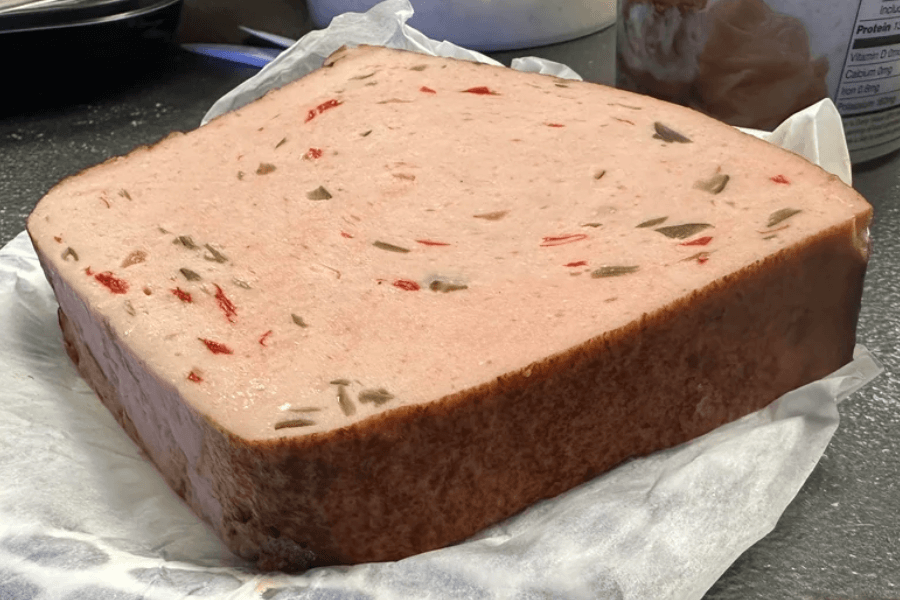
Pimento loaf was a processed meat product dotted with red pimento pieces—think bologna with freckles. It came pre-sliced and pre-haunted, often wrapped in plastic and bad decisions.
It looked like abstract art from a dystopian deli. Texture? Spongy. Flavor? Slightly pork-adjacent. Purpose? Unknown. But it was affordable and allegedly edible, so it sold well.
Kids ate it in sandwiches. Adults pretended to tolerate it. Dogs probably avoided it. If you bit into pimento loaf and didn’t cry, you were stronger than most.
Egg Foo Young: Americanized and Deep-Fried to Mystery

Egg Foo Young was eggs, veggies, and meat, fried into a pancake and drowned in gravy. It was vaguely Asian, aggressively sauced, and about as authentic as a fortune cookie.
Some said it wasn’t bad, but it wasn’t good either. It was the kind of fusion dish that wasn’t sure if it belonged in a diner or a Kung Pao fever dream.
Still, it fed crowds and kept gravy factories in business. People called it “exotic” while ordering it with a side of white bread and a glass of milk.
Hot Dr. Pepper: Beverage or Prank?

Hot Dr. Pepper was a real drink. People heated soda, added lemon, and called it classy. In reality, it was warm, carbonated confusion in a mug. Fizzy, citrusy nonsense.
The first sip was a betrayal. The second sip was denial. The third? Acceptance. Not because it was good—but because the ’60s normalized chaos in liquid form.
It smelled like cough syrup and tasted like regret, yet magazines swore it was “festive.” Sure, so is fire, but that doesn’t mean we want to drink it.
Stuffed Peppers: Surprise! It’s More Meat
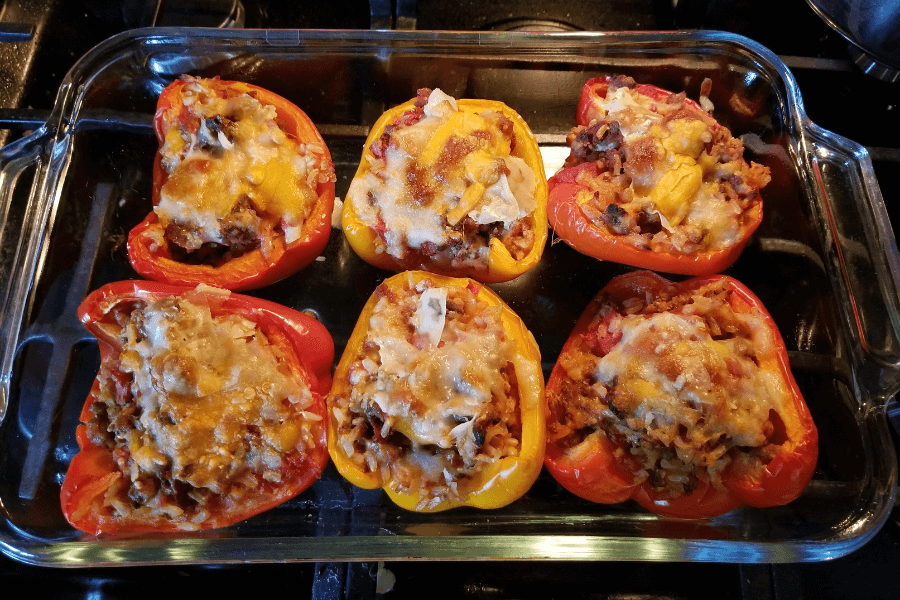
Stuffed peppers were edible containers filled with meat, rice, and whatever else sat in the fridge. The pepper part was often ignored, like an overcooked gift wrap.
Sure, they were colorful. But after an hour in the oven, they collapsed like a sunburned beach umbrella. Still, they delivered protein, filler, and visual confusion.
Everyone ate them because they felt healthy. It wasn’t. It was just meatloaf in a hat. But the 1960s loved disguises, especially when carbs were involved.
Bologna Cake: Yes, That’s a Thing

Take layers of bologna, slather them with cream cheese, and frost the whole thing like a birthday cake. That’s bologna cake—created in a moment of unholy inspiration.
It was sliced like dessert, but smelled like a meat locker. A true showstopper for parties where you secretly hated your guests and wanted them to leave.
One bite, and your arteries filed a restraining order. It’s not a cake. It’s a prank wrapped in lunch meat. Serve with crackers and counseling.

